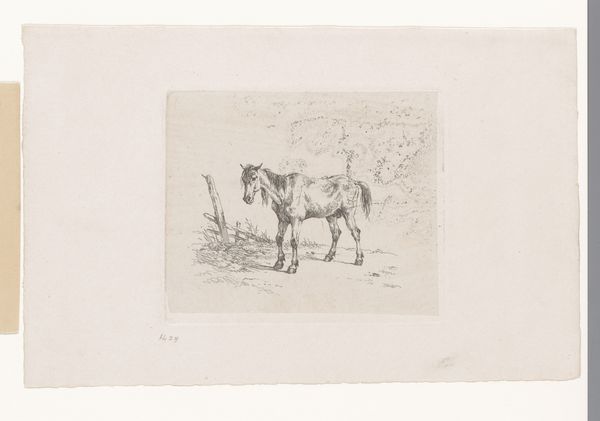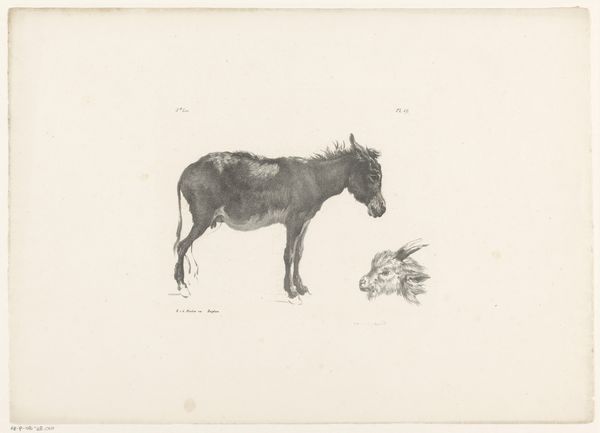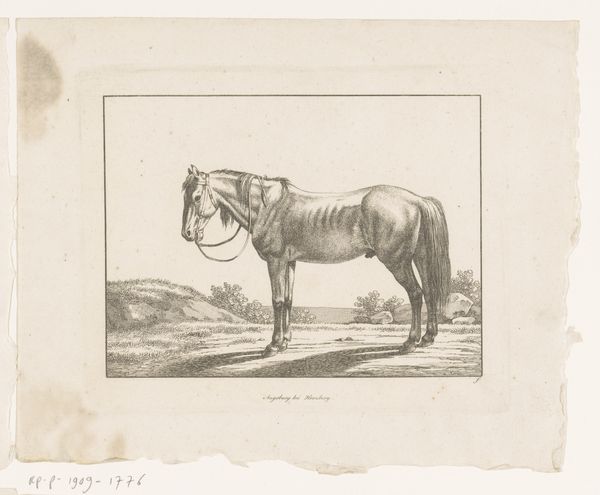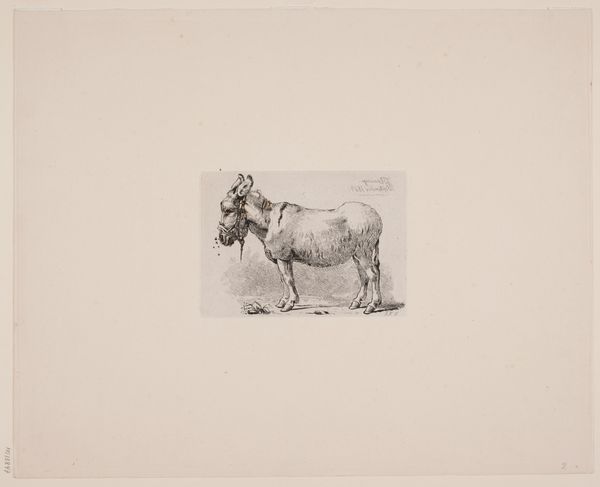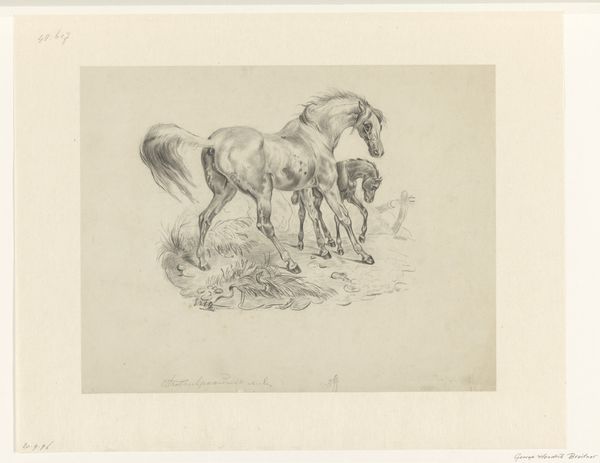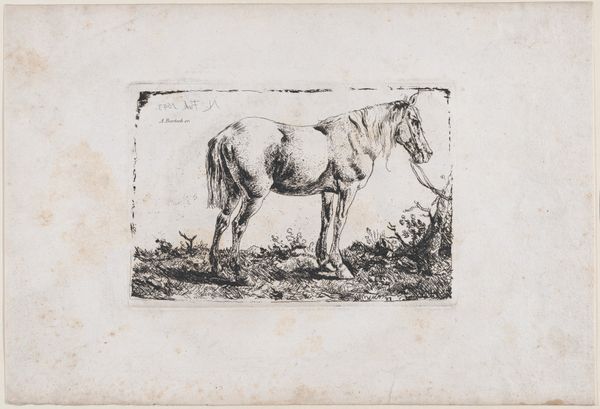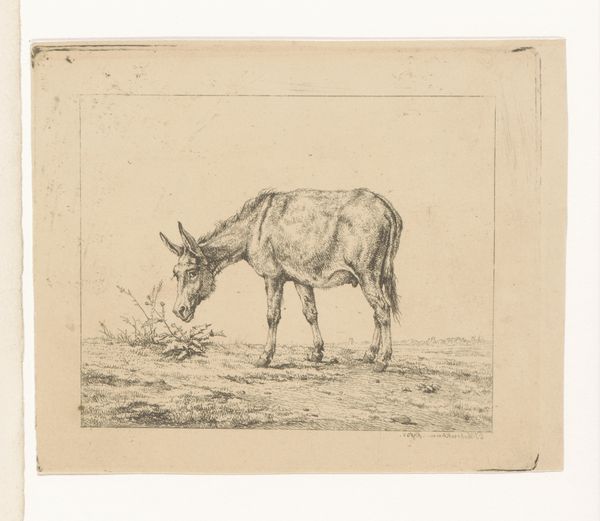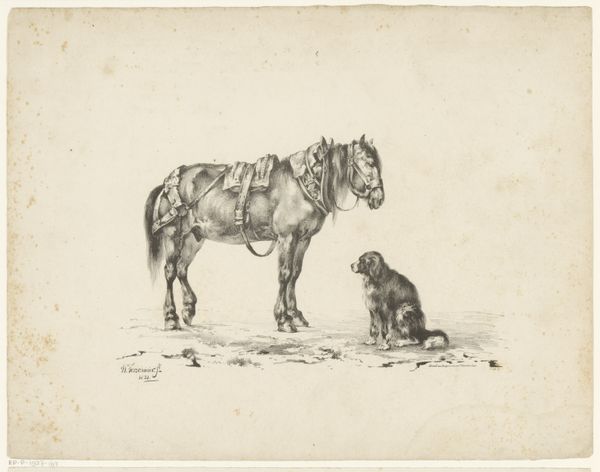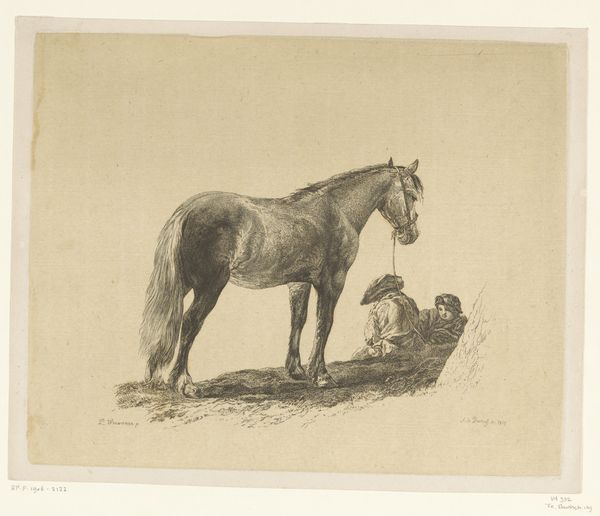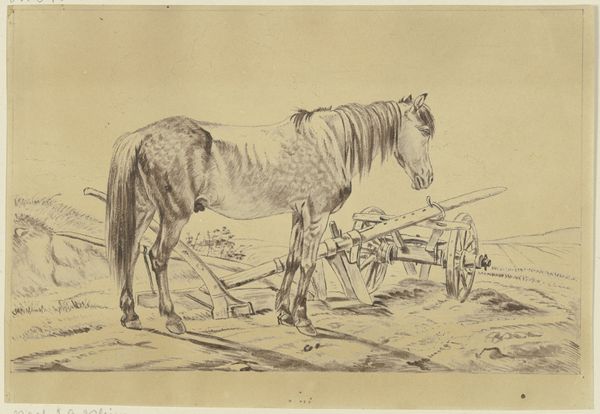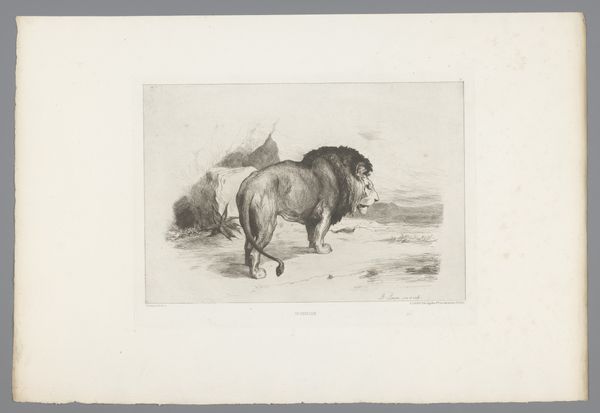
drawing, print, pencil
#
drawing
#
animal
# print
#
pencil sketch
#
old engraving style
#
landscape
#
pencil
#
pencil work
#
realism
Dimensions: height 136 mm, width 189 mm
Copyright: Rijks Museum: Open Domain
Editor: This is "Ezel," a 1908 pencil drawing by Frans Lebret. It reminds me of a scientific illustration with the detailed rendering, but also quite charming. What stands out to you in this print? Curator: The choice of the donkey itself is fascinating. While Lebret clearly had the skill for high academic art, he focuses instead on an animal of burden, historically associated with the working class and often, a symbol of stubbornness or foolishness. What does it say about art institutions, and the public role of art, when we elevate such a subject? Editor: I see what you mean. It is interesting to think of it outside traditional high art subject matter, like portraiture or history paintings. Did the style or medium have an impact? Curator: Absolutely. Prints, drawings, and pencil sketches have had varied receptions throughout history. In 1908, were these seen as preparatory, thus less "valuable," or were they understood as a different mode of artistic expression, reflecting intimacy and immediacy? Furthermore, consider the implied audience. Would a mass-produced print reach a different demographic than an oil painting hanging in a wealthy patron’s home? Editor: That's a great point! I hadn't thought about how the choice of a print expands the potential viewership. I wonder how Lebret viewed the audience for this drawing. Curator: Precisely! Perhaps it's a subtle critique of the established art world or a genuine interest in democratizing art through accessible imagery and affordable mediums. Editor: That really gives me a new way to appreciate "Ezel". Thanks! Curator: My pleasure! It highlights how artistic choices reflect broader societal attitudes and institutional frameworks of the time.
Comments
No comments
Be the first to comment and join the conversation on the ultimate creative platform.

